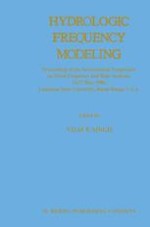Floods constitute a persistent and serious problem throughout the United States and many other parts of the world. They are respon sible for losses amounting to billions of dollars and scores of deaths annually. Virtually all parts of the nation--coastal, mountainous and rural--are affected by them. Two aspects of the problem of flooding that have long been topics of scientific inquiry are flood frequency and risk analyses. Many new, even improved, techniques have recently been developed for performing these analyses. Nevertheless, actual experience points out that the frequency of say a 100-year flood, in lieu of being encountered on the average once in one hundred years, may be as little as once in 25 years. It is therefore appropriate to pause and ask where we are, where we are going and where we ought to be going with regard to the technology of flood frequency and risk analyses. One way to address these questions is to provide a forum where people from all quarters of the world can assemble, discuss and share their experience and expertise pertaining to flood frequency and risk analyses. This is what constituted the motivation for organizing the International Symposium on Flood Frequency and Risk Analyses held May 14-17, 1986, at Louisiana State University, Bat-on Rouge, Louisiana.
